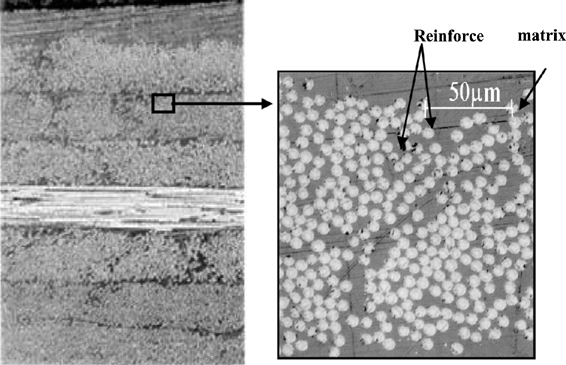5.2. Composite materials
5.2.1. Composite material definition
A composite material is the common name for an array of fibers (reinforce) drowned in a matrix with a much weaker mechanical resistance. The matrix ensures the cohesion and orientation of the fibers, and also transmits the solicitations imposed on the components. The materials thus obtained are strongly heterogeneous and anisotropic.
5.2.2. Composite material constituents
Composite materials mainly consist of:
– a matrix, to which charges and additives are added in certain composites;
– a reinforce (Figure 5.2.).
Figure 5.2. Constituents of a composite material

The physical properties of a composite material directly depend on its different constituents. For example, the imprecision in the fiber’s orientation and position during the composite’s fabrication will increase the uncertainties in the estimation of its physical properties [TRI 00a, WAS 11].
5.2.2.1. The matrix
The matrix links the support’s fibers with each other, and distributes the mechanical strain (resistance to compression or flexion). The matrix is easily deformed and ensures the chemical protection of the fibers. Generally speaking, it is a polymer or an organic resin. The matrices most commonly used in composite materials are thermosetting (TS) and thermoplastic (TP) polymers [REY 90, GAY 05, MOR 07, GAS 10].
Thermosetting matrices are polymers that ...
Get Electrothermics now with the O’Reilly learning platform.
O’Reilly members experience books, live events, courses curated by job role, and more from O’Reilly and nearly 200 top publishers.

